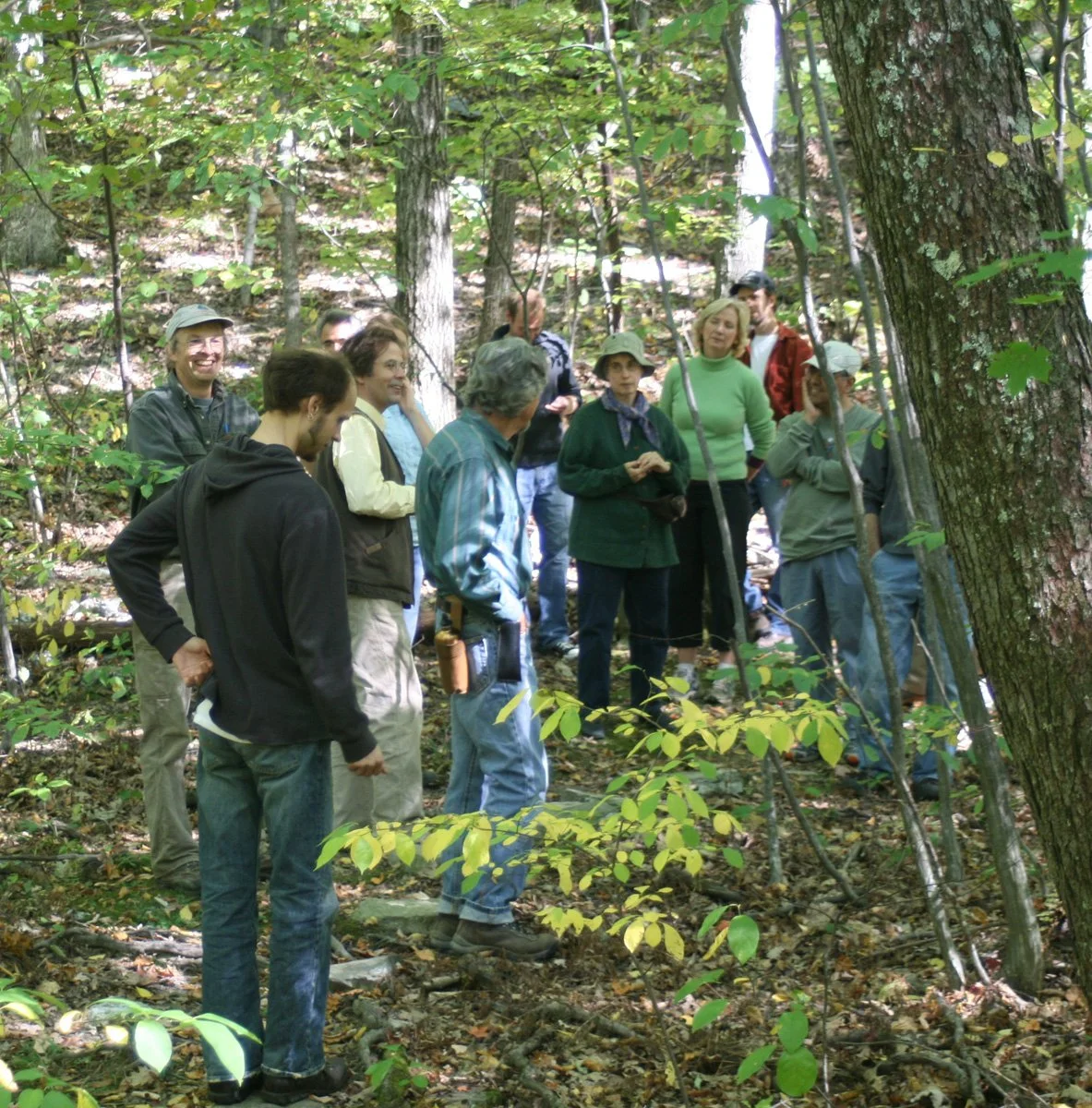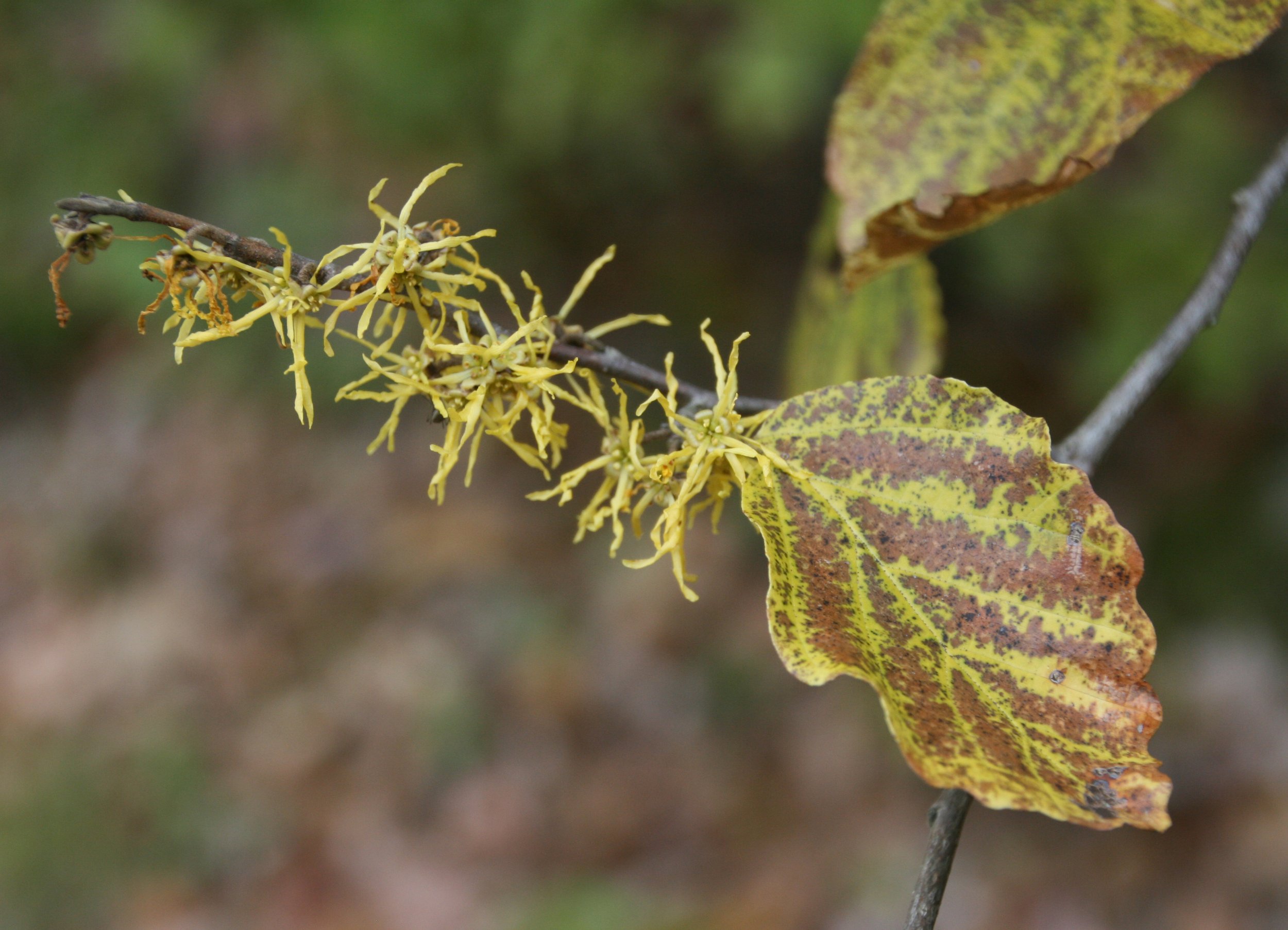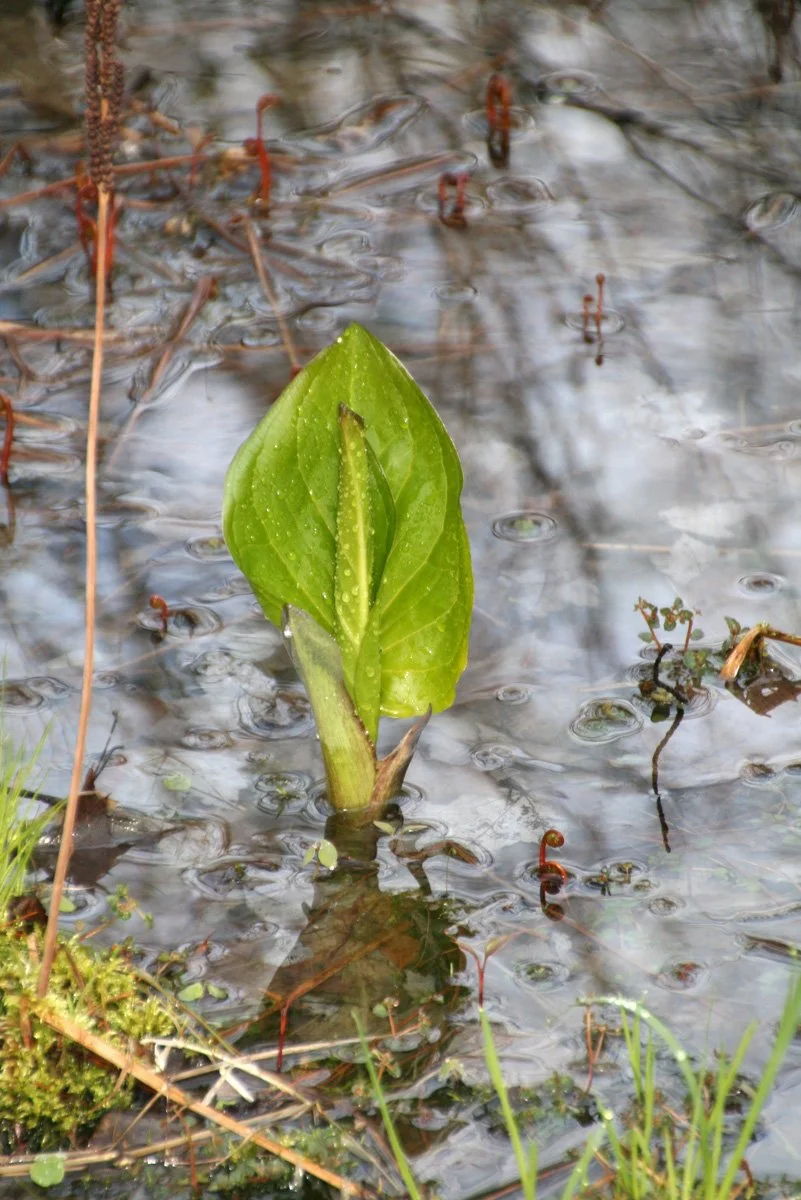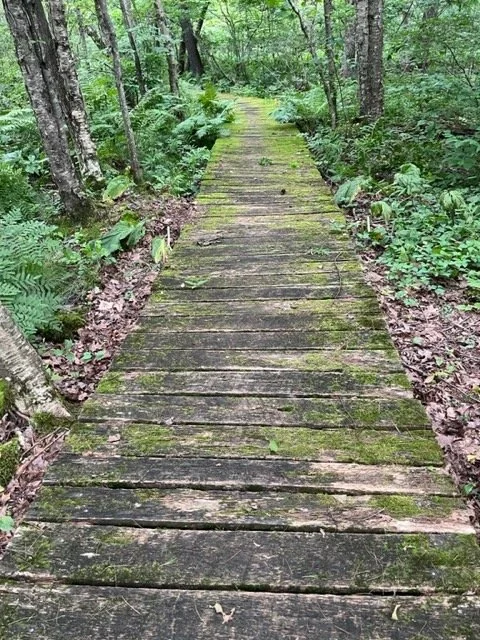Guide to the May Hill Nature Preserve
This 27-acre preserve of forest and wetlands is located near The Nature Institute in Ghent, New York. As stewards of this natural resource, we use it as an outdoor classroom for participants in our courses and workshops, as well as for qualitative science studies. The public is also welcome to enjoy the preserve. (For exact directions, please contact us. It is bordered on the west by the Taconic Parkway.)
While walking through the preserve, please do not pick flowers or other vegetation, but feel free to take time to observe, take photos, or make drawings of what you find. If you come to walk dogs, please keep them on a leash. The following descriptions give you a sense of the variety of habitats and species to be found along these trails.
Workshop participants from The Nature Institute
Entrance
The first part of the trail, originally built as a driveway, is quite wide and open, allowing sun to shine in. Many flowering plants will be found here through the seasons. The early plants include coltsfoot, wild strawberries, and several species of violets. On the right side of the path in a depression, blue flag irises cluster and in late spring you can see them blooming. Summer wildflowers include flowering white avens and Indian tobacco. Spiraea, blackberry, and raspberry bushes border the path. Trees here include sugar maple, red oaks, and swamp white oaks in the wet area to the right of the path. Look for a tall sugar maple and a red oak to the right of the trail here, taller than the rest of the upper canopy trees. Their wide spreading branches suggest that they have grown in earlier times in more open and spacious fields.
Witch hazel branch
Upland Woods
From the entrance path you will go to the right down the gradual slope along either of the two footpaths, and the plants community changes. Trees in the mid-level canopy here (20-60 feet high) include shagbark hickory with long strips of curling bark, smaller witch hazel trees with asymmetrical leaf shapes, and ironwood (American hornbeam) with its muscular grey bark surface. An occasional sugar maple or white pine are often the tallest trees, between 60 and 100 feet high. Along the trails you will see understory vegetation and wildflowers, such as bracken fern with its three part leaflets, baneberry plants, small white wood anemones, and starflowers in May or June. Wood frogs, usually light brown with big gold eyes, will be fully camouflaged until they hop out in front of your feet.
Trout lily
Wetland Edge
When you reach the wetland edge the terrain has flattened out. The vegetation becomes much more dense green, with mosses and sedges, as well as cinnamon ferns, and poison ivy! Small trees in this region include the witch hazel, which flowers uniquely in the fall-look for these flowers in October. Hop hornbeam and black birch are other species of small trees, while yellow birch can grow larger, with trunk diameters up to 6-14 inches. Yellow birch can also be distinguished by its golden bark, and roots exposed crawling above the surface of the ground. It is the character tree of the wetland edge community. Spice bush is the prominent shrub, the first bush to flower in the spring. It produces small bright yellow blossoms and smooth green leaves, and its dark grey bark has a spicy smell when scratched. Wildflowers in this part of the woods in the spring are the yellow trout lily, white foamflower, the jack-in-the-pulpit with its striped hood, and the small white dwarf ginseng. In summer, white wood aster and daisy fleabane flower.
Skunk cabbage
Wetland Core
As you reach the bottom of the hill, you enter a basin and will see the boardwalk through the wetland core. This is the heart of this preserve. It has the greatest diversity of plant life, coming in a continuous progression of growth and blooming as the seasons change.
Within this core, standing water alternates with small islands of slightly higher ground. The "islands" are created by trees that died and fell over as the water collected in this lowest section of the basin. High bush blueberries grow on the islands, flowering in the spring and fruiting in August. Mosses grow on these high points as well, but the other vegetation in the core can withstand long periods of being immersed in water.
The water level in the wetland core is maintained by a culvert which runs under the Taconic Parkway. When the water level rises above the culvert, the water flows out to the west, ensuring a maximum level that is just lower than the height of our boardwalk.
Trees in the core are primarily the red maple and smaller alders with fruits that dry into brown cone-like shapes. Spiraea bushes have pink fuzzy flowers and distinctive small sharp-toothed leaves. Nearer to the ground you will see the skunk cabbage, a characteristic wetland plant with its broad green leaves up to three feet wide. Many ferns grow near the skunk cabbage, including sensitive fern, and cinnamon fern with a central, brown spore-carrying stalk rising in its center. Marsh violets on tall stalks show their purple blossoms in early summer, and other wildflowers are able to grow in the standing pools of water. Notable species are the wild calla with its single white petal-shaped leaf surrounding a cylinder of tiny flowers, and the bright orange jewel weed flowering late in summer.
Black locust boardwalk
The 300-foot boardwalk is made from black locust, which is native to the southern Appalachian mountains and now grows in many northeastern forests (although it doesn't grow in this preserve). The locust is one of the hardest of the hardwoods, so it is resistant to rotting and does not need to be chemically treated, but it is laborious to work with since it requires pre-drilling each nail hole! The boardwalk is built in individual sections that rest on the swampy subsoil. It rises and sinks with frost heaves in the winter.
Wild mushrooms
Transitions/Interlude
Continuing out of the wetland core along the path to the left, you will come onto an old wagon road, essentially a wide trail lined with ferns that is muddy in spring and holds many flowering plants in summer. Follow this wagon trail along the wetland edge to the curve in the path laid out with small logs, and this will bring you back into the wetland edge, where you cross over a tiny creek via a small bridge.
Crossing the small bridge, keep your eyes and ears out to your right, because up in this end of the wetland, a barred owl was released in 2001 after being rehabilitated, and has been seen here from time to time!
Pine Grove
As you move over the small bridge and begin up the other side of the valley, the trail will wind to your left along the wetland edge. At this corner if you look to the right you will notice the darker woods slightly up the hill. This is a white pine grove, where there are fewer deciduous trees. The needles of the pines allow less light to reach the forest floor than in the other upland woods.
Hepatica blossom
Hilltop Oak Community
Following the existing trail to your left through a flat stretch, you will walk up to the edge of a small knoll, which is its own small habitat area, a bit higher and drier than the other woodlands, and geologically distinct as well. At the top of the hill there is scattered shale on the ground, which wildflowers, grasses, and sedges grow through. Hepatica is one of the first flowers to bloom in the spring, with white blossoms or in shades of lavender. Tufts of grass exist here that are not found in the lower woods; and sedges, which are distinguished from true grasses by their triangular, sharp edged cross-section, also grow here on this hilltop. Chestnut oak is the primary upper canopy tree, easy to pick out by its chunky textured bark. Leaves of the chestnut oak are less sharply lobed than the red or white oaks in the other woodland habitats.
Hickory buds opening
Beech Grove
As you come down from the knoll and continue south on the path, you will find on your right a grove of trees with light leaves and smooth light gray bark. Here at the southwest corner of the trail you are in a grove of American beeches. In fall and winter, these trees hold many of their dying leaves curled up, orange-brown on their branches, and the wind rustles through them with a soft whisper.
West Edge of Wetland:
Now the trail doubles back and you will walk along the wetland edge again with the wetland core area to your right, perhaps seeing purple irises blooming, or their tall green leaf blades rising above the water surface. More highbush blueberries are growing on both sides of the trail, and lowbush blueberries and mosses can be seen on the ground beside your feet. Note the base of the larger trees that have much moss around them, and more of the layers of exposed shale that were seen on the knoll.
From here the trail loops back on itself, returning to the base of the knoll. Follow the path back to the first loop, and take the left branch of the trail back up to the entrance.
Here is a list of plant species identified in the preserve.










